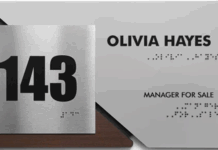With the end of the year comes New Year’s resolutions. This time around, in addition to the gym membership or commitment to staying in touch with friends, consider taking some proactive measures to set your business up for success in the New Year.
Here are three important things you can do right now to help ensure 2020 is a prosperous year for you and your company.
Prepare tax documents ahead of time
Home business owners should always have tax liability in mind. Doing this obviously involves thinking about the dread that most people have once a year more often, but doing that will keep the looming tax season from being so daunting. There are a variety of tax deductions that a home business owner can use and benefit from — one often misunderstood deduction concerns the use of a home office. To qualify, you must regularly and exclusively use part of your home for conducting business. Exclusivity means that when relatives come, the home office doesn’t double as a guest room! You must also show that your home is your principal place of business. If your home qualifies, you can deduct things like a portion of your utilities, maintenance, and other costs associated with home ownership. This is typically based on the size of your office compared to the size of your home.
If you plan on itemizing deductions, keep your receipts and invoices organized and easy to find. It can be helpful to consult a tax advisor BEFORE you need them — so they can help you prepare the documentation you need. A good preparer will know your business, your deductions and the federal and state regulations affecting your company (including your personal taxes, for those running a business in a pass-through entity like an LLC). If you have a good understanding of your situation, then don’t overlook tax prep software; it works well for a lot of self-employed business owners, and some even have live tax professionals to help if you get tripped up.
The end of year is a good time to review business documents for changes and even mistakes. Waiting until the last minute can cause nightmares fixing paperwork with encroaching deadlines.
Being proactive about your taxes now will not only save you from potential headaches come April, it can also save you money by allowing you to maximize deductions. So as long as you make sure you qualify, you can help prevent costly, stressful mistakes. Whether you do it on your own or with the help of a professional, you almost always get better results starting early and taking your time.
Use financial reports to gauge business health
Financial reports are a snapshot of your business’s operations at a given moment in time. While there are many to choose from, a home business owner may find these three to be very useful when gauging the strength of your company and its finances:
- The balance sheet
- The income statement
- The cash flow statement
Staying on top of these reports is invaluable as it helps you make sure your business is operating efficiently. If you have some accounting experience, you already know how essential these are. If you are like a lot of businesses, focusing on your business more than on being your own accountant, here is a quick primer:
A balance sheet lists your total assets and your total liabilities plus the equity in your company. The term “balance” is literal here — your company assets less your liabilities and equity must all equal zero! The balance sheet provides a snapshot of what the business owns and what the business owes. From there, you can use the balance sheet as a component of a variety of ratios to inform future business decisions. You don’t need to generate a balance sheet every day, but it’s beneficial to know how to create one and to have the information you need to generate one at ready when you need it.
Next is the income statement, which you can think of as looking at your company’s financial health over a period of time, rather than just at a single point, like the balance sheet. An income statement is composed of your (revenue & gains) minus (expenses & losses). The result is your business’ Net Income. Using this number, you can compare your company to others in your sector, see if outsized expenses are hurting profits, and understand whether your day-to-day operations and efficiencies suitable for your financial needs.
Finally, there’s the cash flow statement, which can tell you if your business is generating a cash profit. The cash flow statement looks at the cash flowing into and out of your business. This is important to determine the short-term health of your company — like whether your business can pay off its debts or afford to hire a new employee.
These three reports can help you get a clear financial picture of whether or not your business is healthy, and they should be used appropriately throughout the year to help you make informed decisions about your operations.
Plan ahead for big goals
With the base of understanding your taxes and finances, you can now turn your attention to the year ahead. Think back to the things you wanted to accomplish this past year, and anything on your wish list right now. You should have a clear idea of whether or not you can commit to the plans you’ve created. Additionally, you can determine whether you have a surplus for even more growth or a deficit that might mean scaling back some.
With tax savings in hand and financial data in mind, it’s a good time to consider applying for a loan should your business need one and should your financial picture make you a good candidate. While taking out a business loan could introduce risk to your company, it may be necessary if you’re planning on expanding operations, purchasing equipment or inventory, or looking to increase working capital in the New Year. Making informed decisions about your expenses can help you work much more effectively and be more productive.
Overall, you’ll also notice that having a long-term view can help with short-term planning. Setting realistic and rational goals keeps you accountable on your objectives and gives you another metric for success. Setting these goals at the beginning of the year also lets you know whether your expectations for yourself are achievable or if you need to re-evaluate based on current circumstances.
No matter what your plans are for the new year, it’s important to take steps now and not put preparations off for next year. By thinking about your tax liability, generating financial reports and using those to plan for the new year, you dramatically increase your chances of a successful 2020.
Find a Home-Based Business to Start-Up >>> Hundreds of Business Listings.
















































